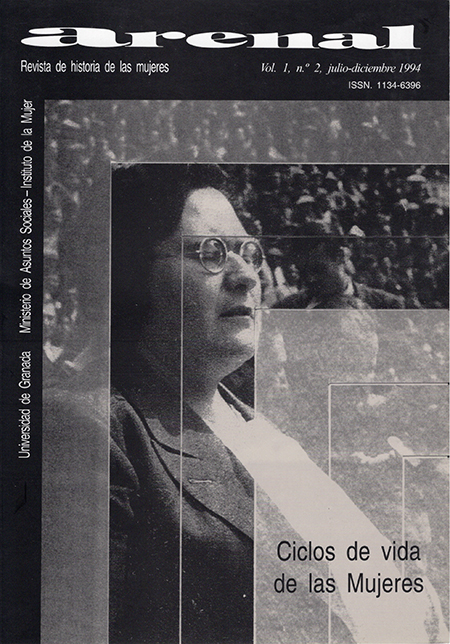Widowhood in Norway: From the Poor Law Society to the Welfare Society. The Case of Norway, 1875-1964
Keywords:
Widows, Life cicles, Welfare Society, NorwayAbstract
This article analyzes gender and social class as analytical categories to explain how
widows have profited the Norwegian social welfare iniciatives between 1875 and 1964. The
author analyzes mainly the economic problems faced by the widows of the so-called respectable
working class and middle class. She stablishes how for those that have no other economic
options poor relief was the last resort until the aproval of Widow's and Mothwr's Insurance Act
in 1964. She points out that, in general, the impact of industrialization, the gendered division
of labor and, finally, the ideology of domesticity helped to define the rights within the social
security schemas on the basis of paid work and with no relation to the domestic one. Therefore,
those were always rights reserved only to young and unmarried women. For the others the
solutions were until after the second World War private, individual o collective, iniciatives.
Downloads
Downloads
Published
How to Cite
Issue
Section
License
Los/as autores/as que publican en esta revista están de acuerdo con los siguientes términos:
Los autores/as conservarán sus derechos de autor y garantizarán a la revista el derecho de primera publicación de su obra, el cuál estará simultáneamente sujeto a la Licencia de reconocimiento de Creative Commons 4.0 BY-NC-ND que permite a terceros compartir la obra siempre que se indique su autor y su primera publicación esta revista.
Los autores/as podrán adoptar otros acuerdos de licencia no exclusiva de distribución de la versión de la obra publicada (p. ej.: depositarla en un archivo telemático institucional o publicarla en un volumen monográfico) siempre que se indique la publicación inicial en esta revista.
Se permite y recomienda a los autores/as difundir su obra a través de Internet (p. ej.: en archivos telemáticos institucionales o en su página web) antes y durante el proceso de envío, lo cual puede producir intercambios interesantes y aumentar las citas de la obra publicada. (Véase El efecto del acceso abierto).














